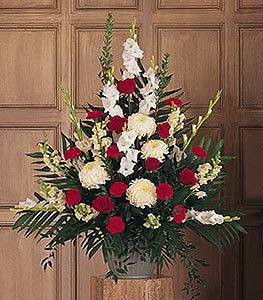|
|||||||||||||
|
Blossom Florist�s Flower Idaho in Idaho is the greatest. Our Idaho Flower Shops offer flower delivery in Idaho with a 100% satisfaction guarantee. Our goal is to send only fresh flowers to Idaho with our professional and caring staff that is always available to serve your needs.
|
|
Idaho Click here to Send Flowers to Idaho Today |
||
|
Boise, ID |
||
|
Our General State History and Information
Prior to the arrival of European and Mexican explorers, roughly 8,000 Native Americans representing two distinct groups inhabited Idaho: the Great Basin Shoshone and Bannock tribes of the Shoshone-Bannock and the Shoshone. Paiute and the Plateau tribes of the Coeur d�Alene, Nez Perce and Kootenai. Today, Idaho�s Native American heritage, their tribes and their chiefs are reflected in county names like Nez Perce, Benewah Shoshone, Bannock and Kootenai counties and the communities of Shoshone, Pocatello, Blackfoot, Nezperce, White Bird, Kamiah, Lapwai, Weippe, Kooskia, Picabo and Tendoy.
Spanish explorers made trips to the Northwest beginning in 1592. Spaniards introduced pigs, horses, domestic fowl, tomatoes, beans, corn and garlic to the Native Americans of the Northwest. Lewis and Clark were the first Euro-Americans to set foot on what is now known as Idaho. They encountered Spanish-speaking Native Americans as well as those who spoke their tribal language. They were followed by French-Canadian fur trappers; resulting in names of communities like Coeur d�Alene (French for "heart of an awl") and Boise (Le Bois-French for "the trees"). Even the impact of Hawaiian Islanders employed as laborers in the Northwest fur trade received recognition through the naming of Owyhee County. Almost the entire staff of Fort Boise from 1834-1844 were from the Hawaiian Islands. Mountain men, including some Spaniards and Mexicans, lived off the land as trappers and hunters. In the 1860�s, there were a number of Mexican vaqueros (cowboys) living in the Treasure Valley. By 1863, Mexicans were mining at Spanishtown, a camp near Rocky Bar. Jesus Urquirdes, one of several successful Mexican business people, came to Boise in 1863, became a prominent Pacific Northwest packer and built the Spanish Village in 1870s to house his Mexican packers. The 1870 census included 60 Mexican-born individuals. Between 1900 and 1920, a large number of Basque immigrants came to Idaho from the Pyrenees to work as sheepherders. Today, Boise, Idaho�s capital, has the largest Basque community in the United States. Idaho was the first state in the nation to elect a Jewish governor. Moses Alexander was elected in 1914 and re-elected in 1916. In 1990, Larry Echohawk was the first Native American to be elected attorney general. Our Historic Figure Ezra Taft Benson 1899-1994: Government official and religious leader, born in Whitney, Idaho, USA. He was President Eisenhower's secretary of agriculture (1953--1961). He became president of the Church of Jesus Christ of Latter-Day Saints (Mormons) in 1985.
Chief Joseph 1835-1904: Nez Perc� chief; born in the Wallowa Valley of present-day Oregon. A peaceful leader of a peaceful tribe, he was forced into a state of war in 1877 and helped lead 750 of his people on a 1,500-mile flight to Canada. Within 40 miles of the border, his people starving and freezing, he surrendered in October 1877, delivering an oft-quoted speech at the event. After being held in Oklahoma, he returned to the northwest (1885), where he encouraged his people to get an education and to abstain from drinking and gambling. |
||
Birthday |
Valentine's Day |
Christmas |
Mother's Day |
Father's Day |
We specialize in wedding | New Baby and Symphaty / funeral flowers.
Link Page
We specialize in wedding | New Baby and Symphaty / funeral flowers.
Link Page






















